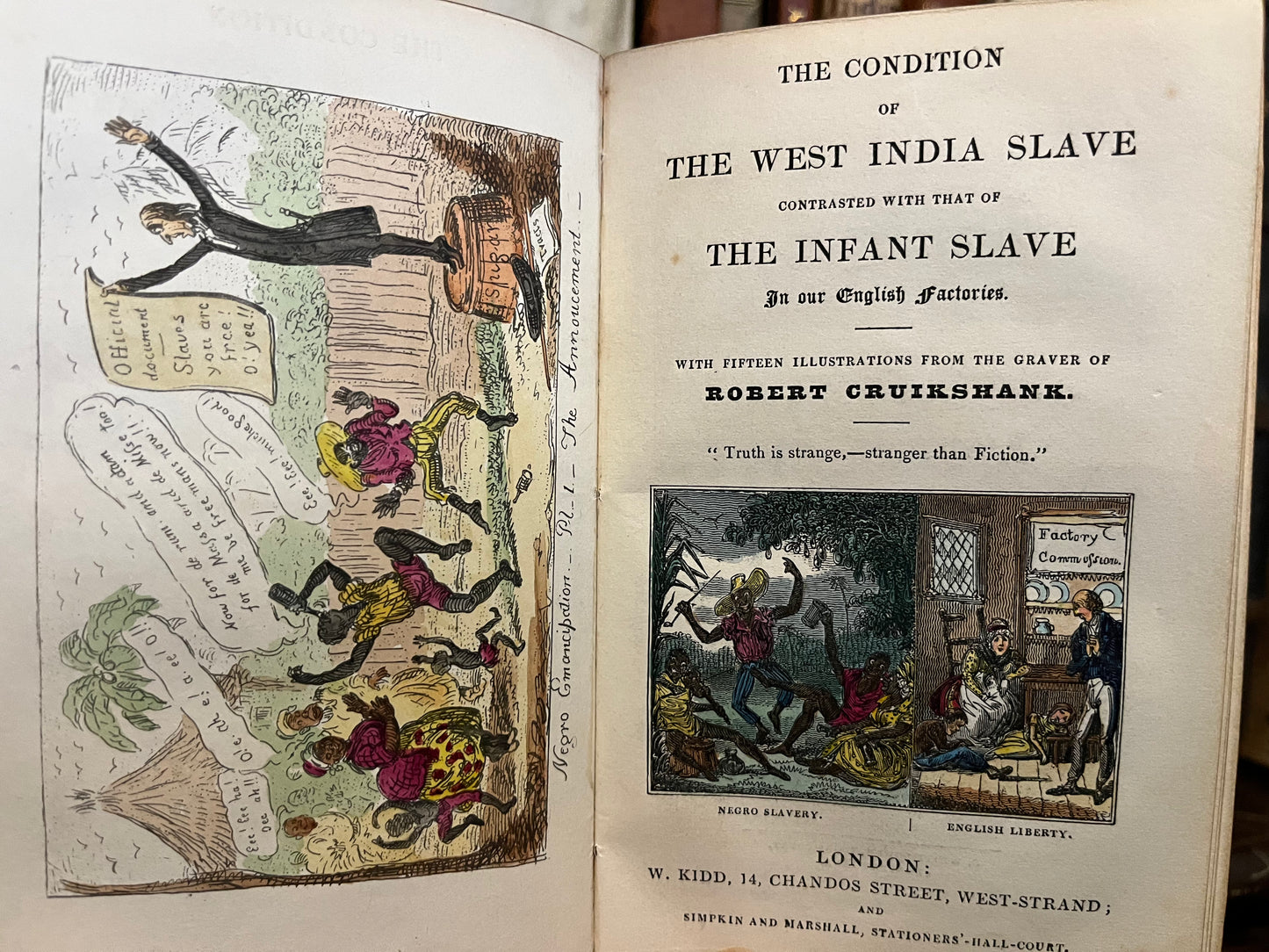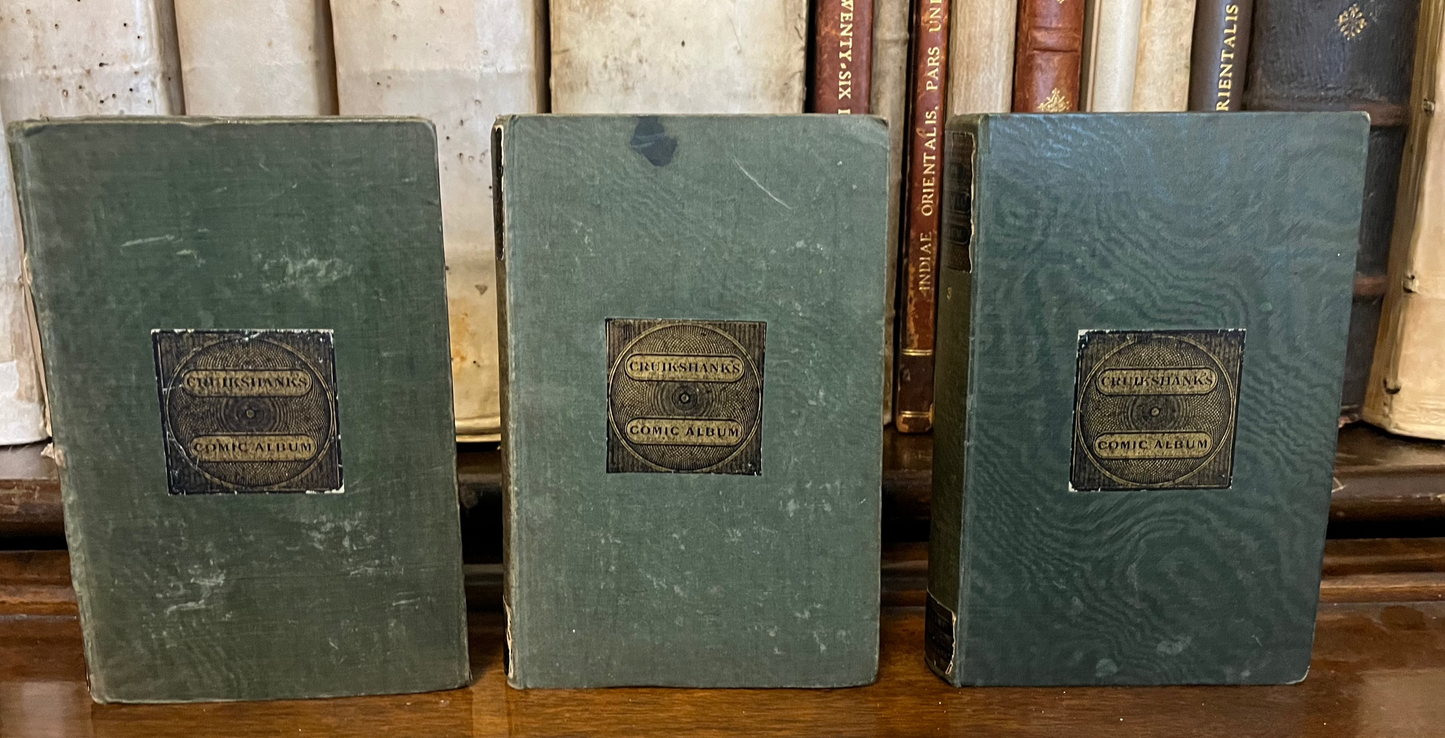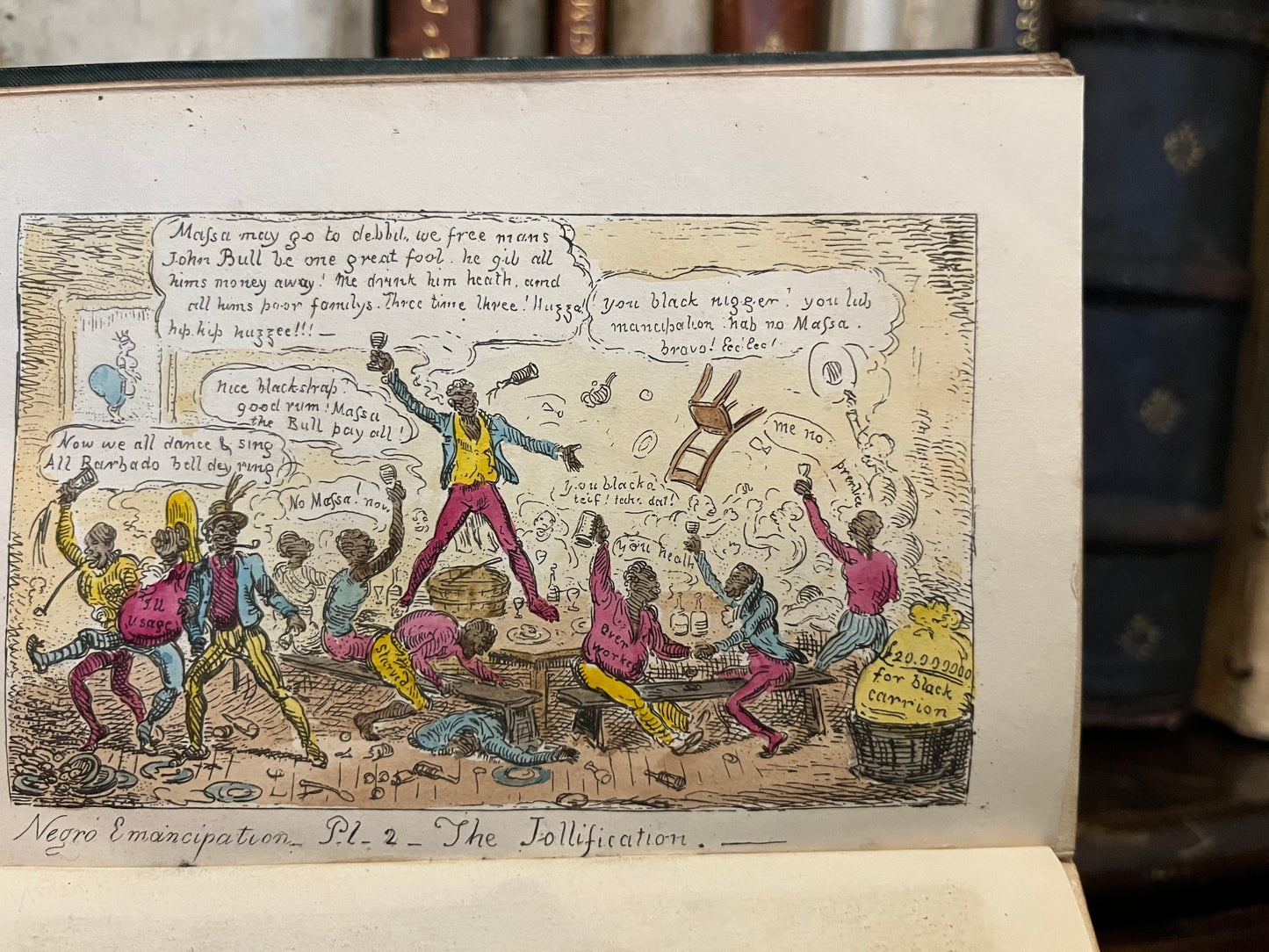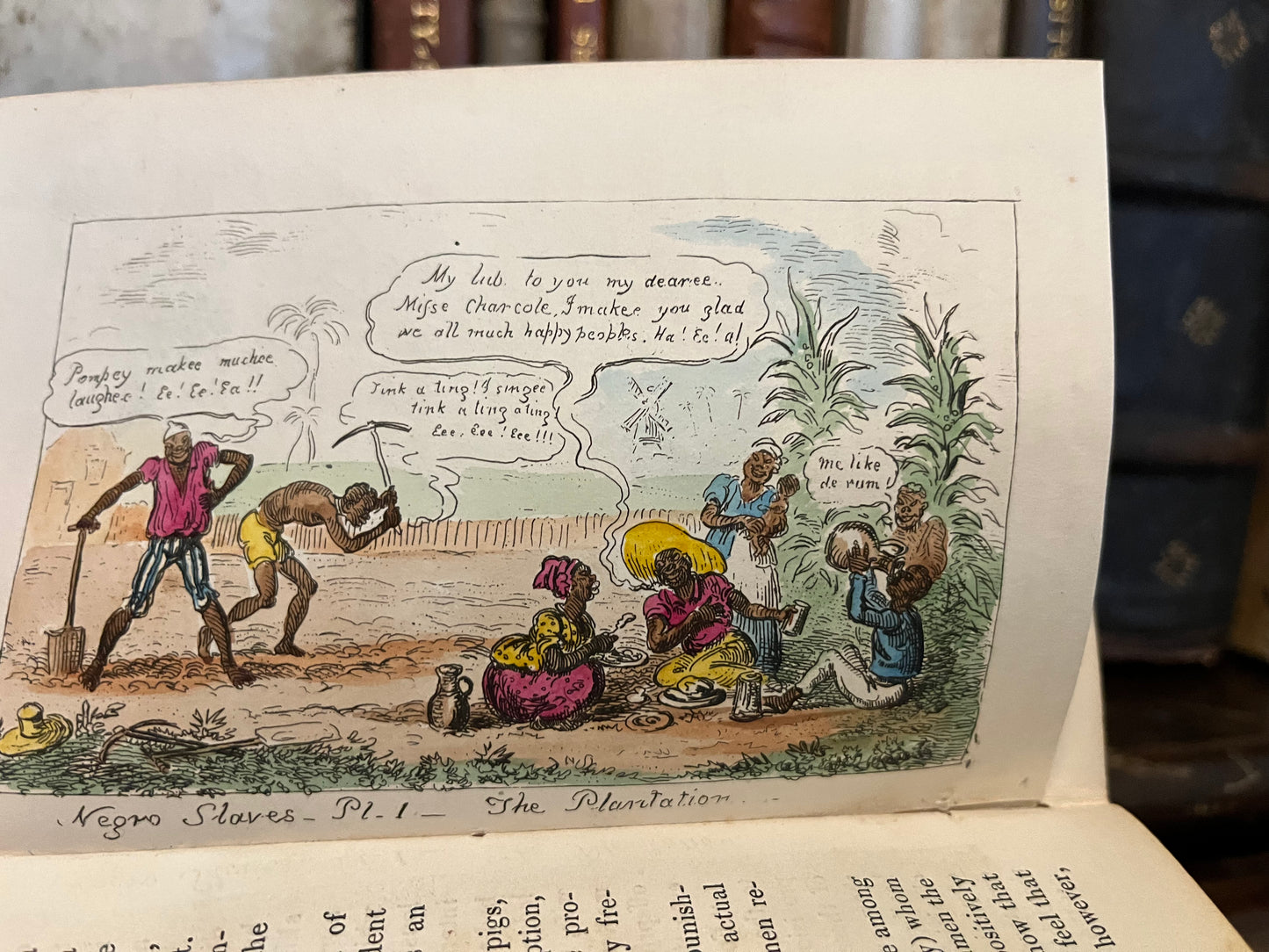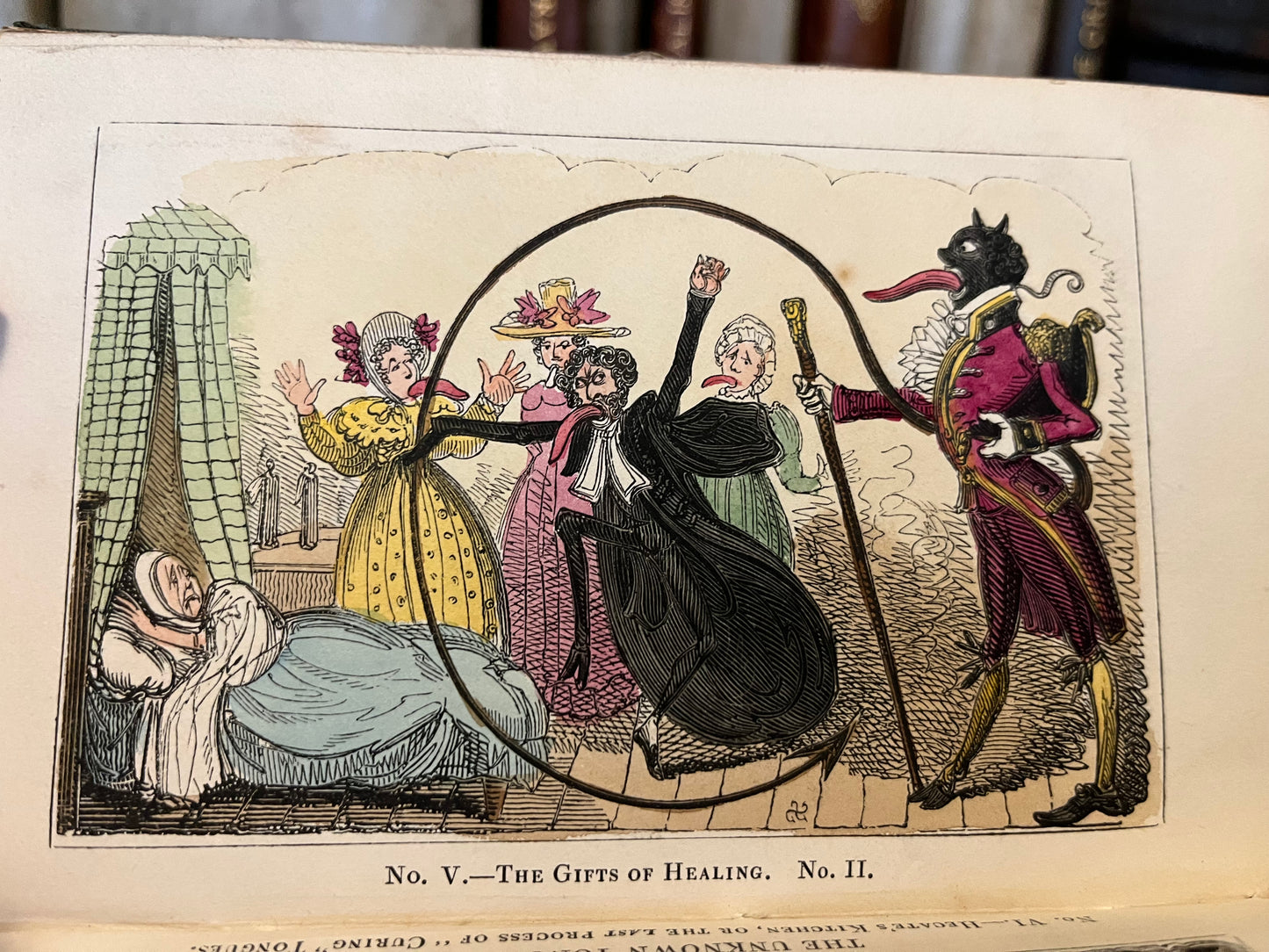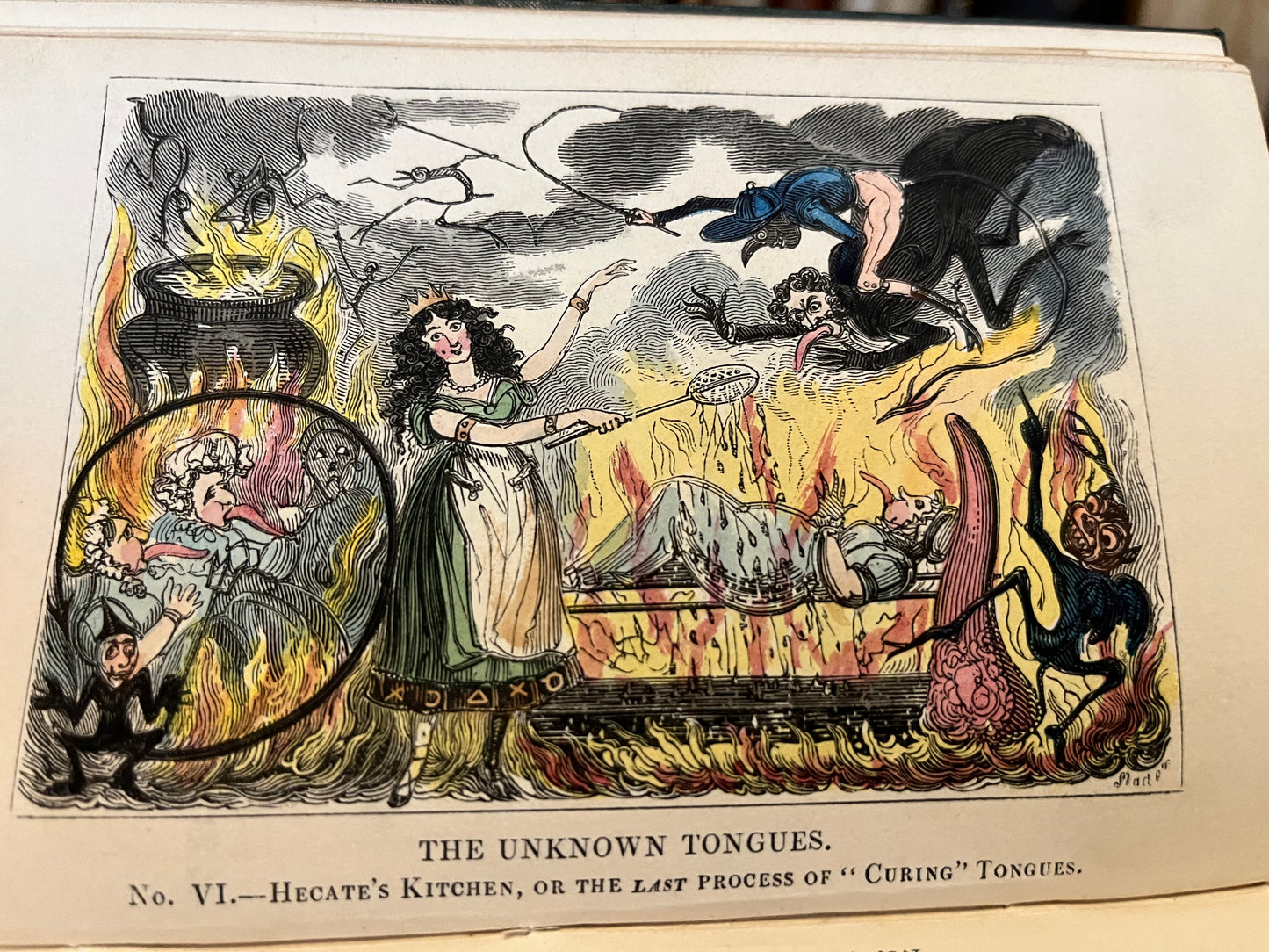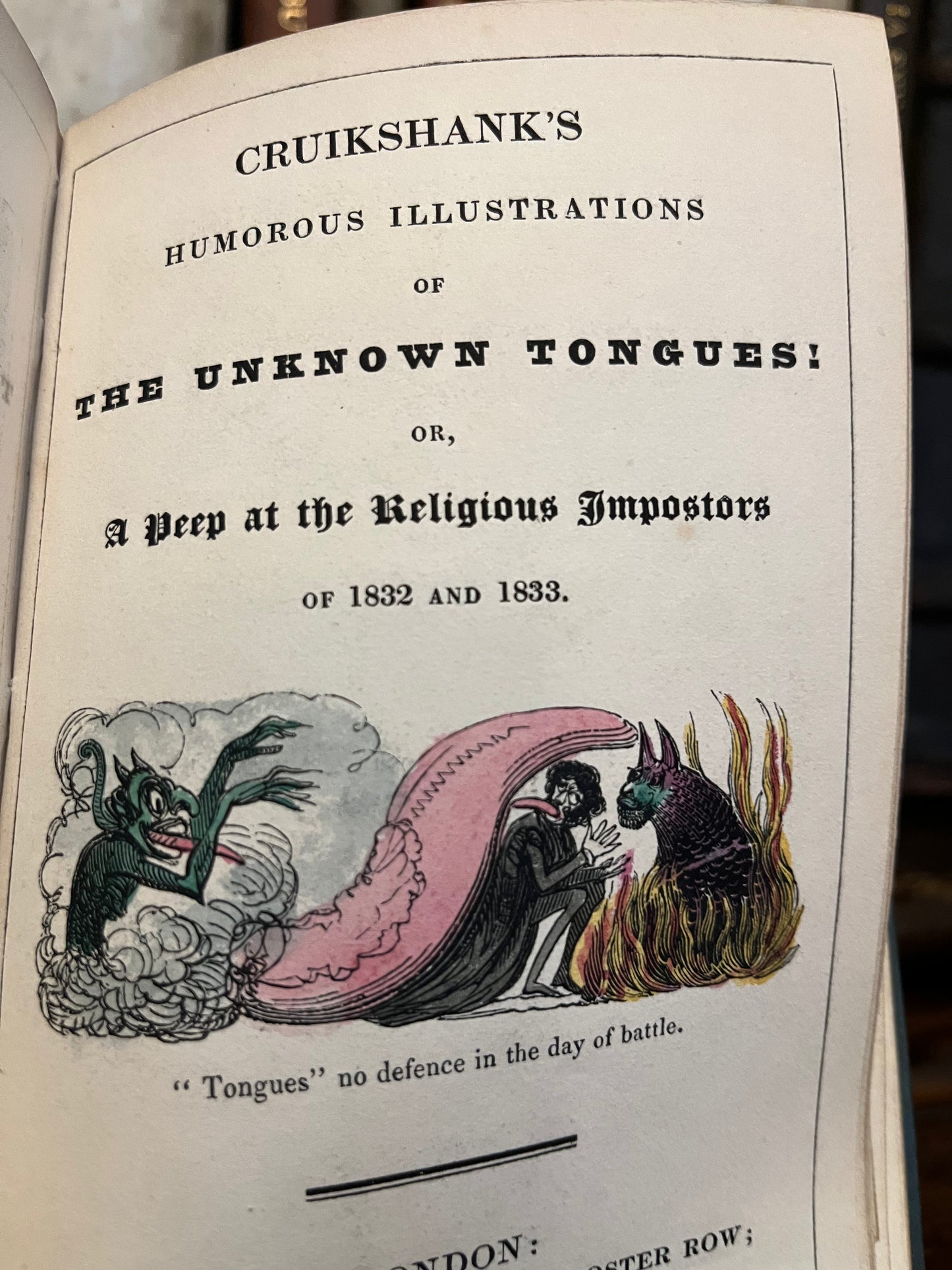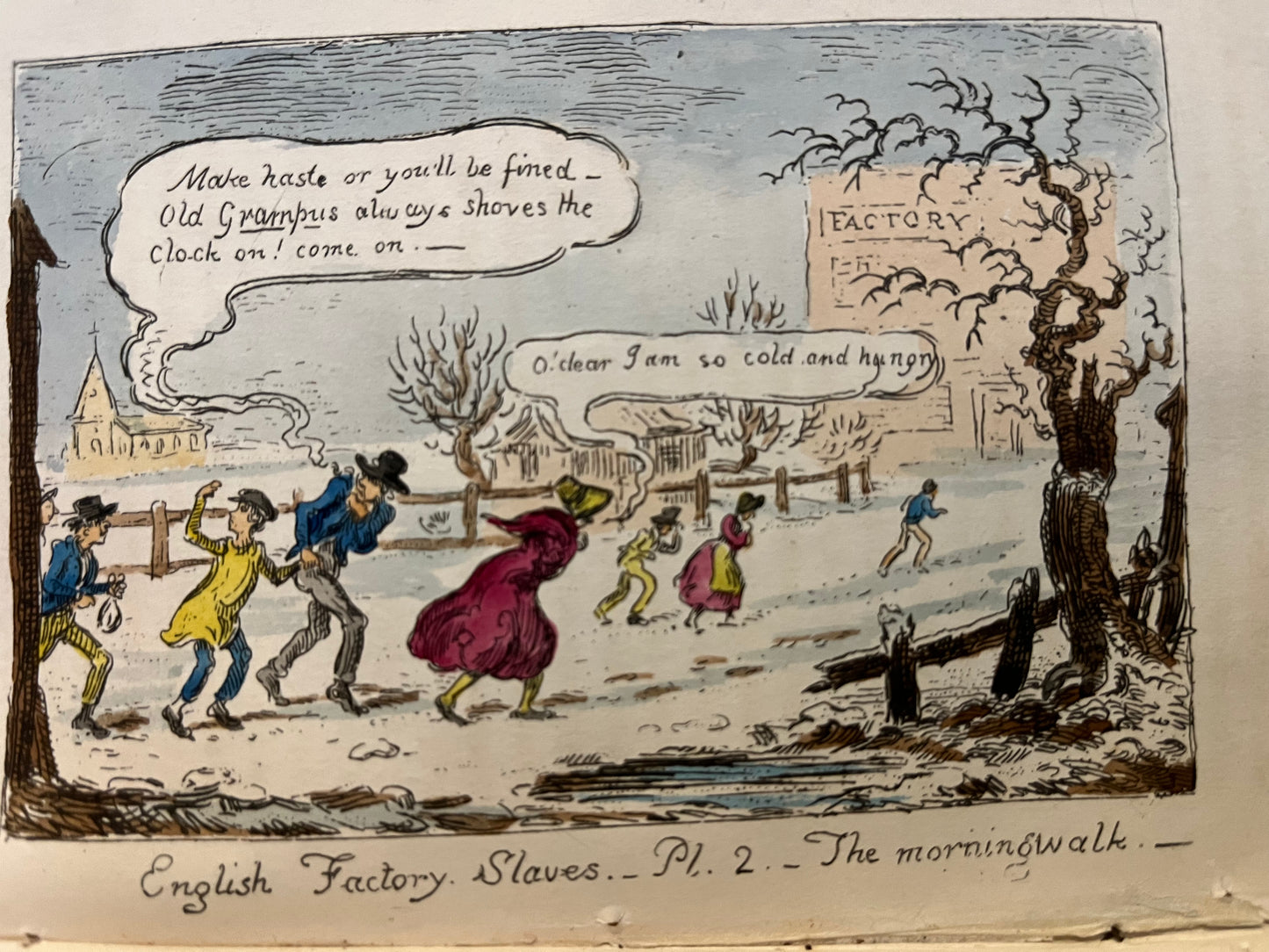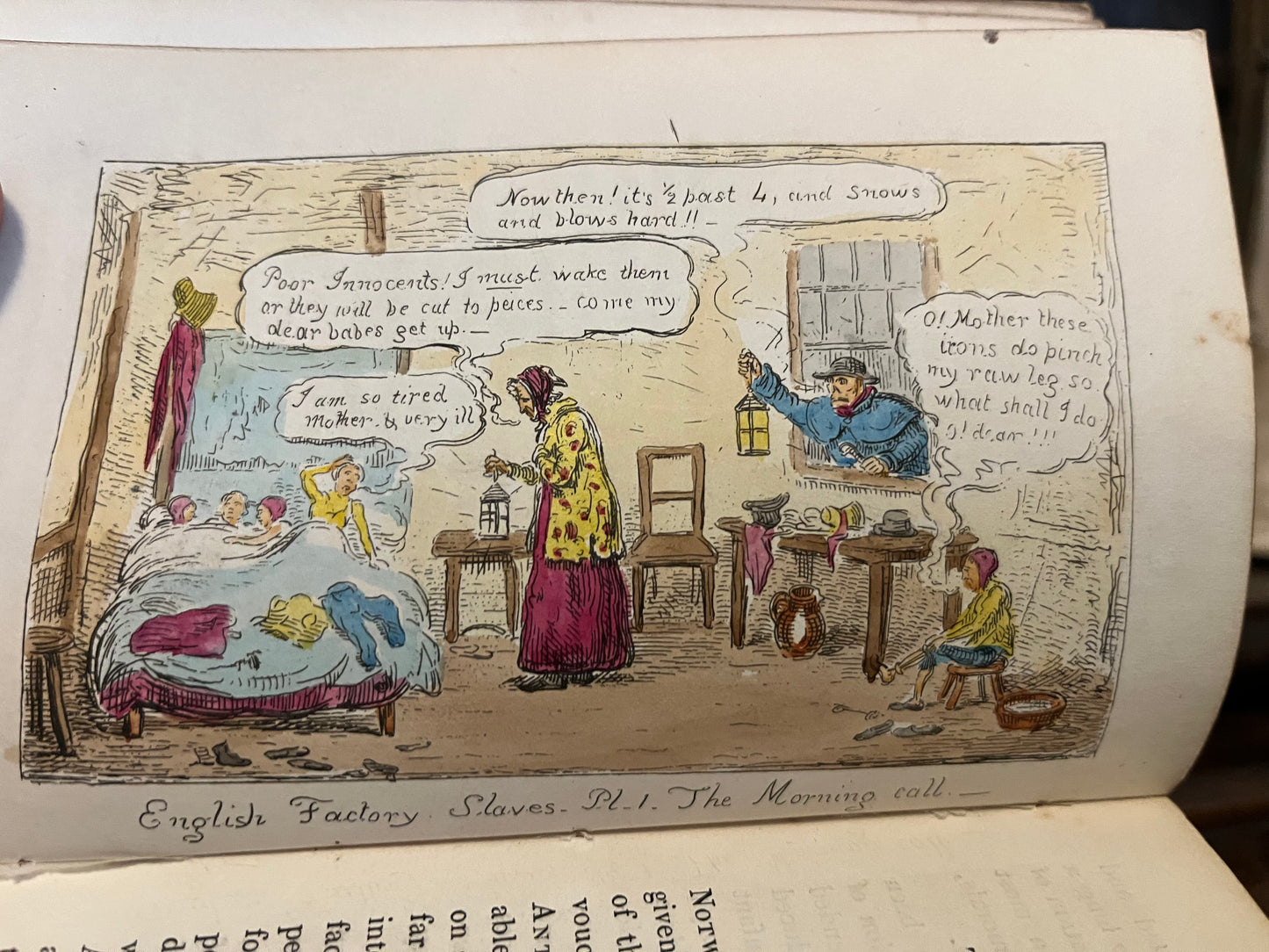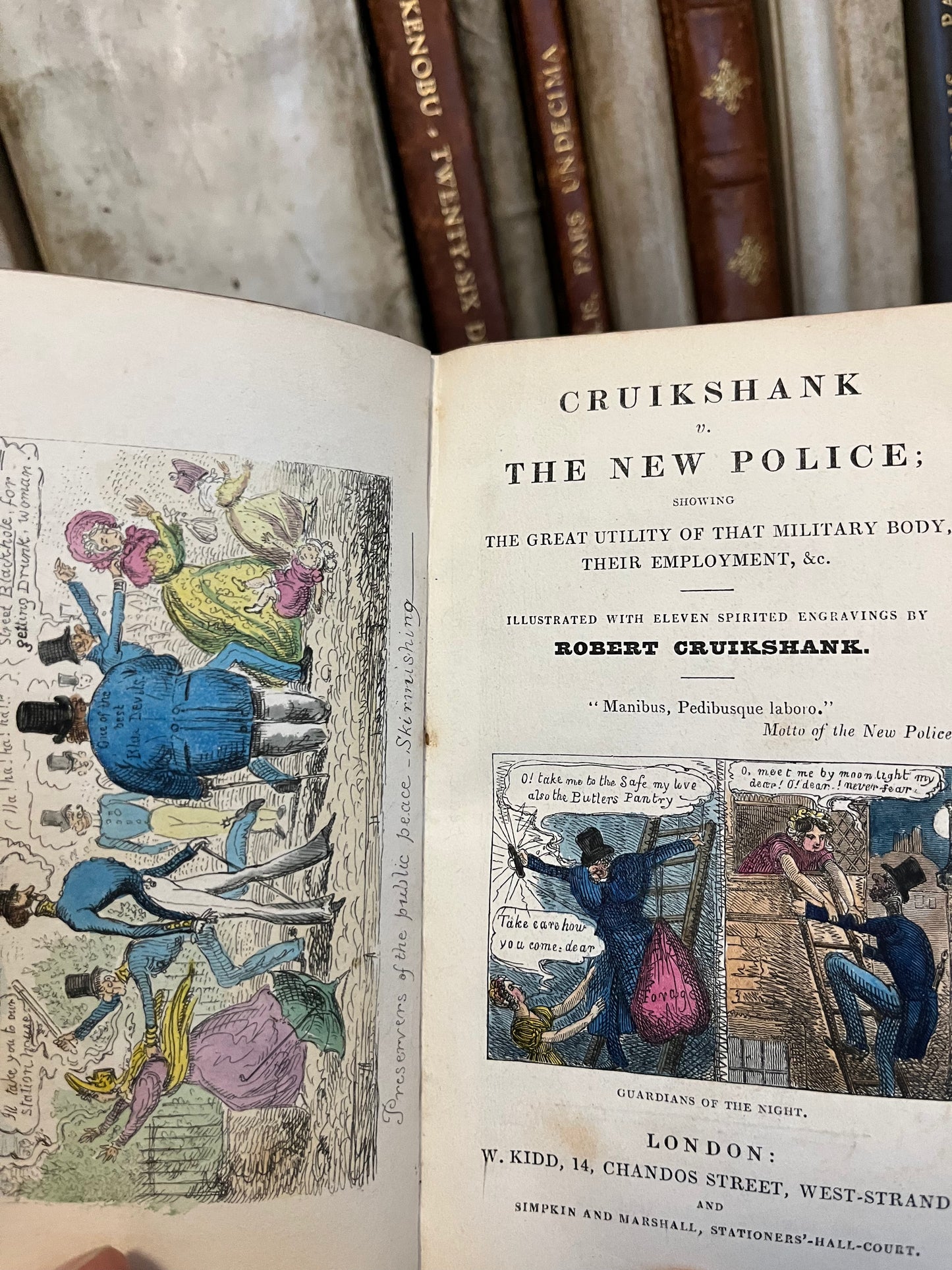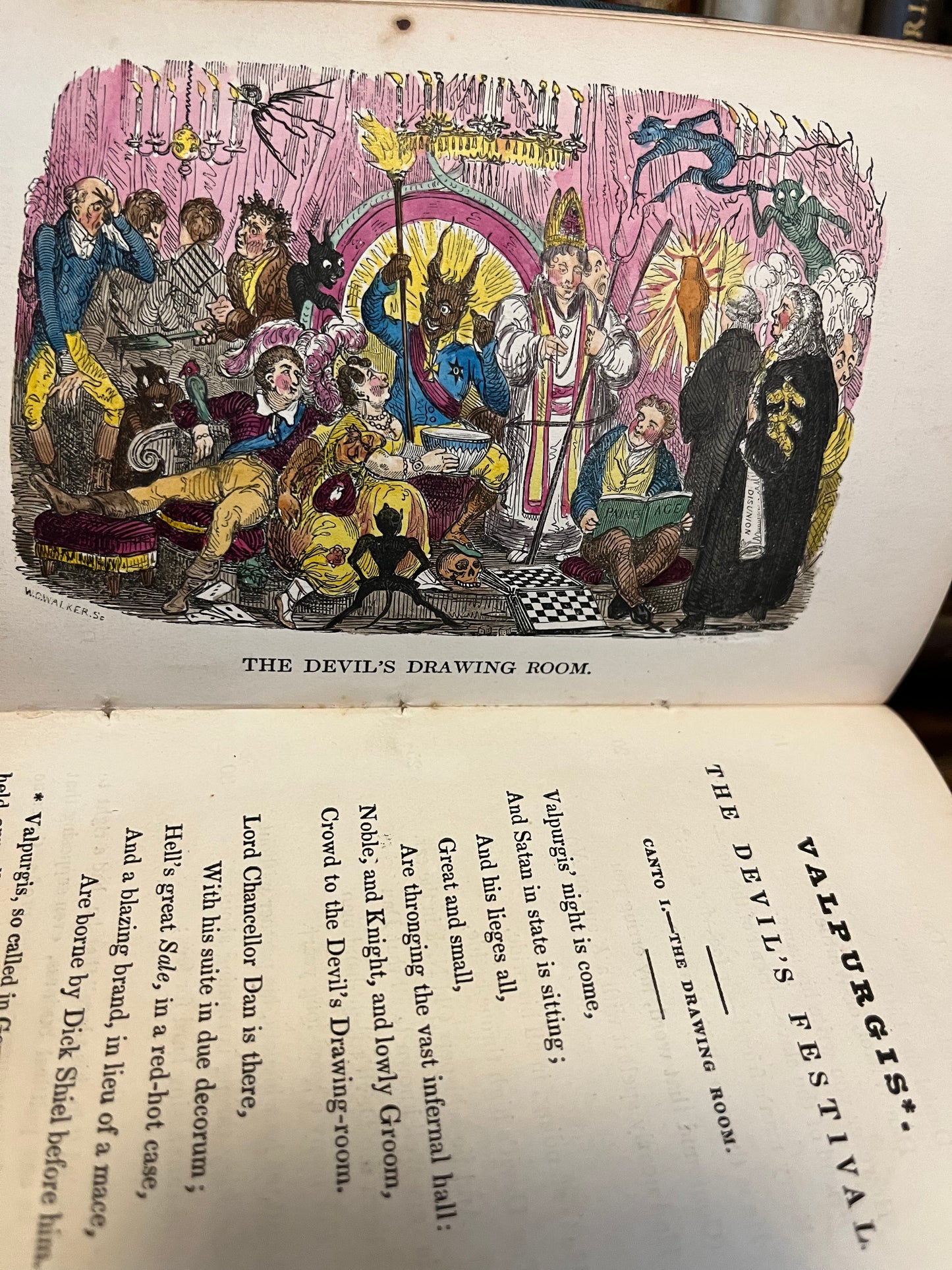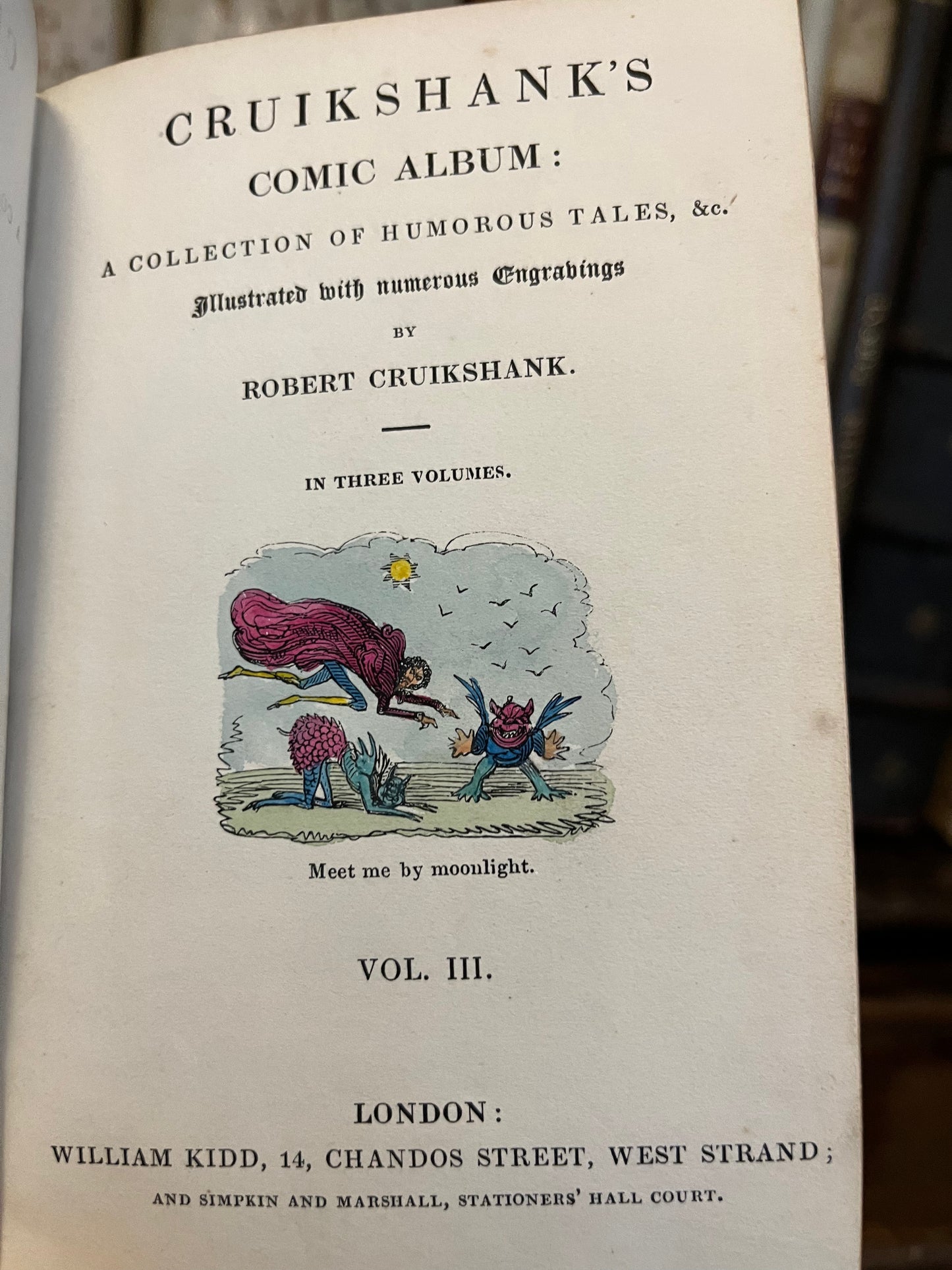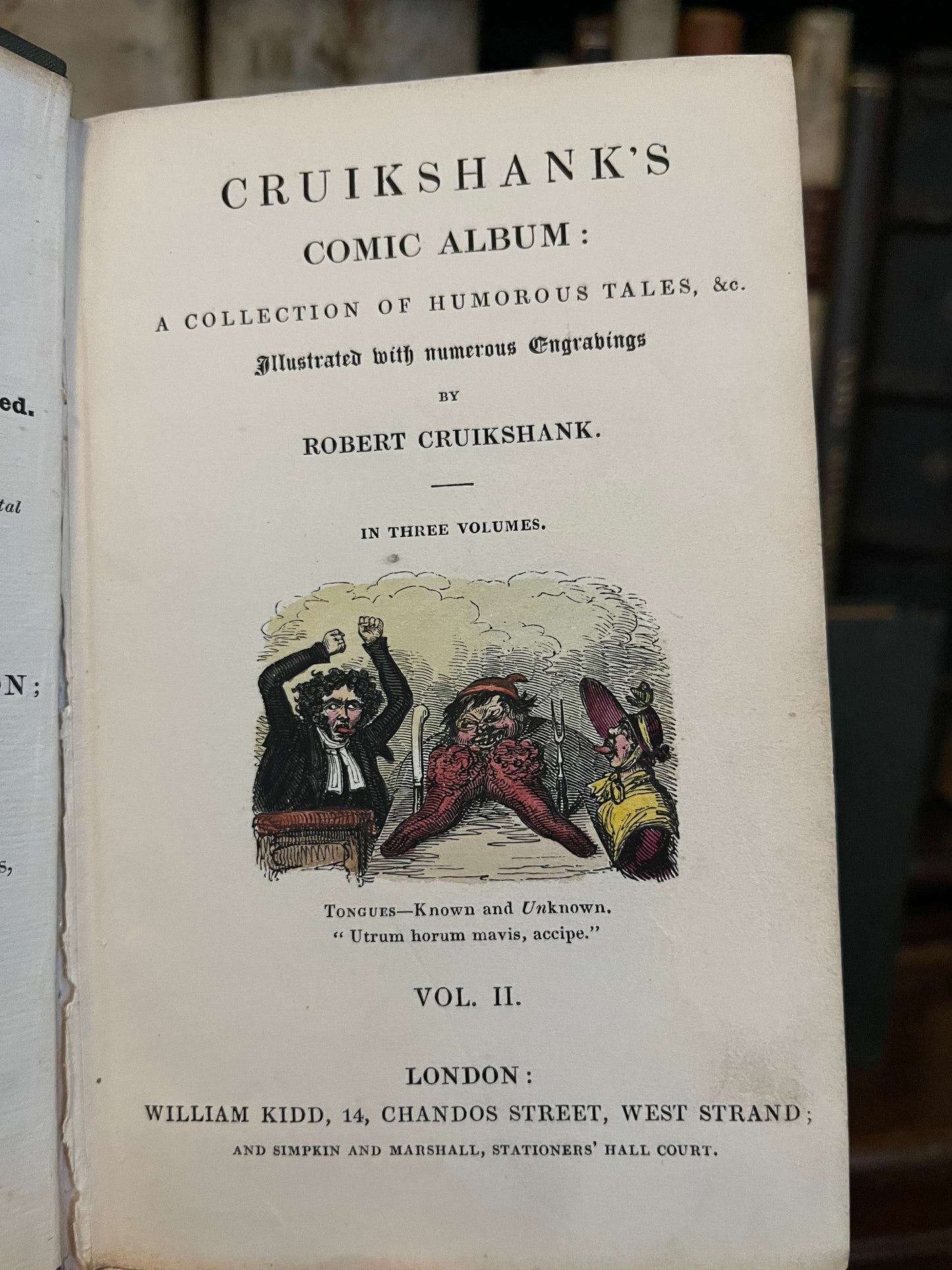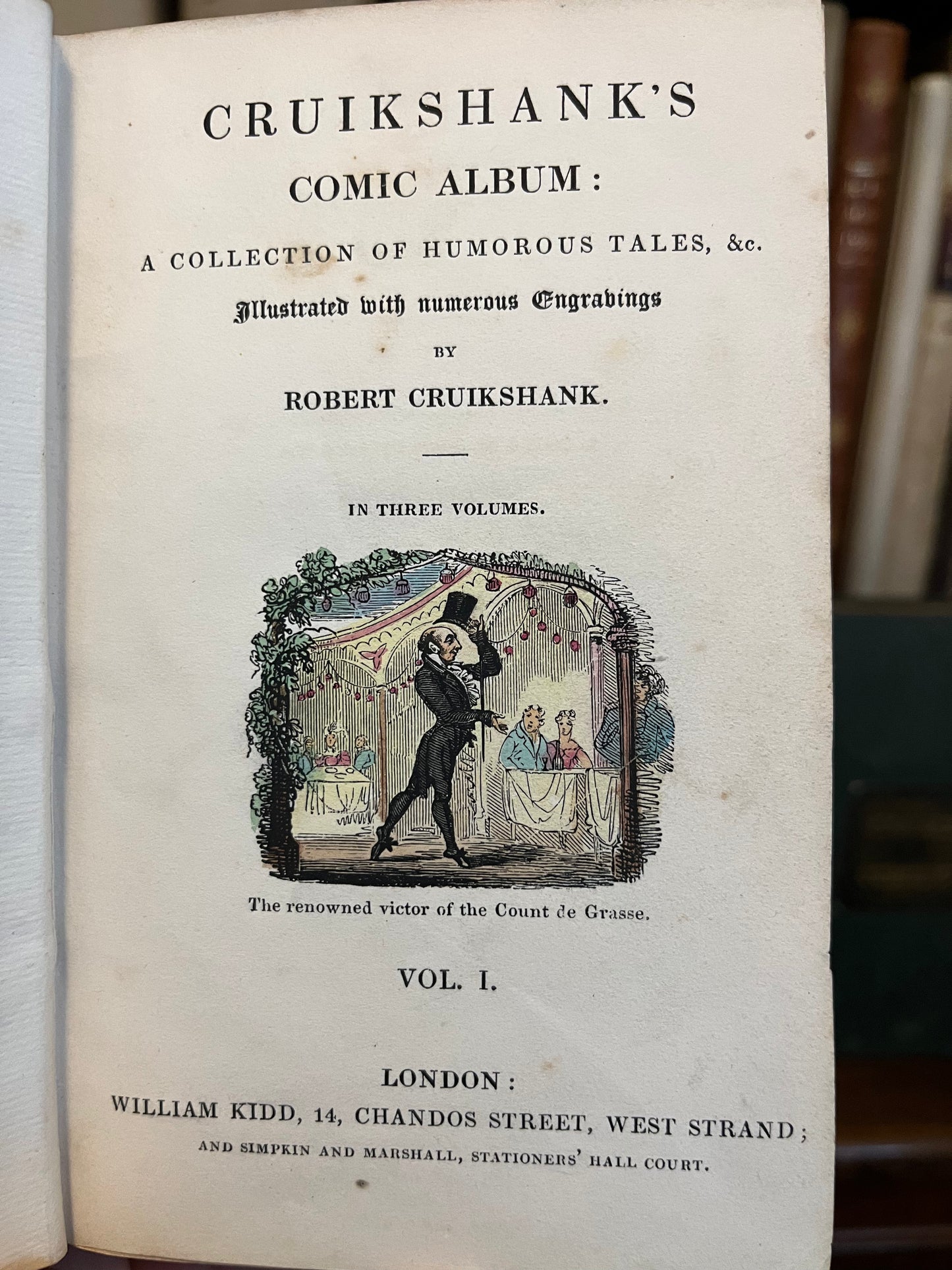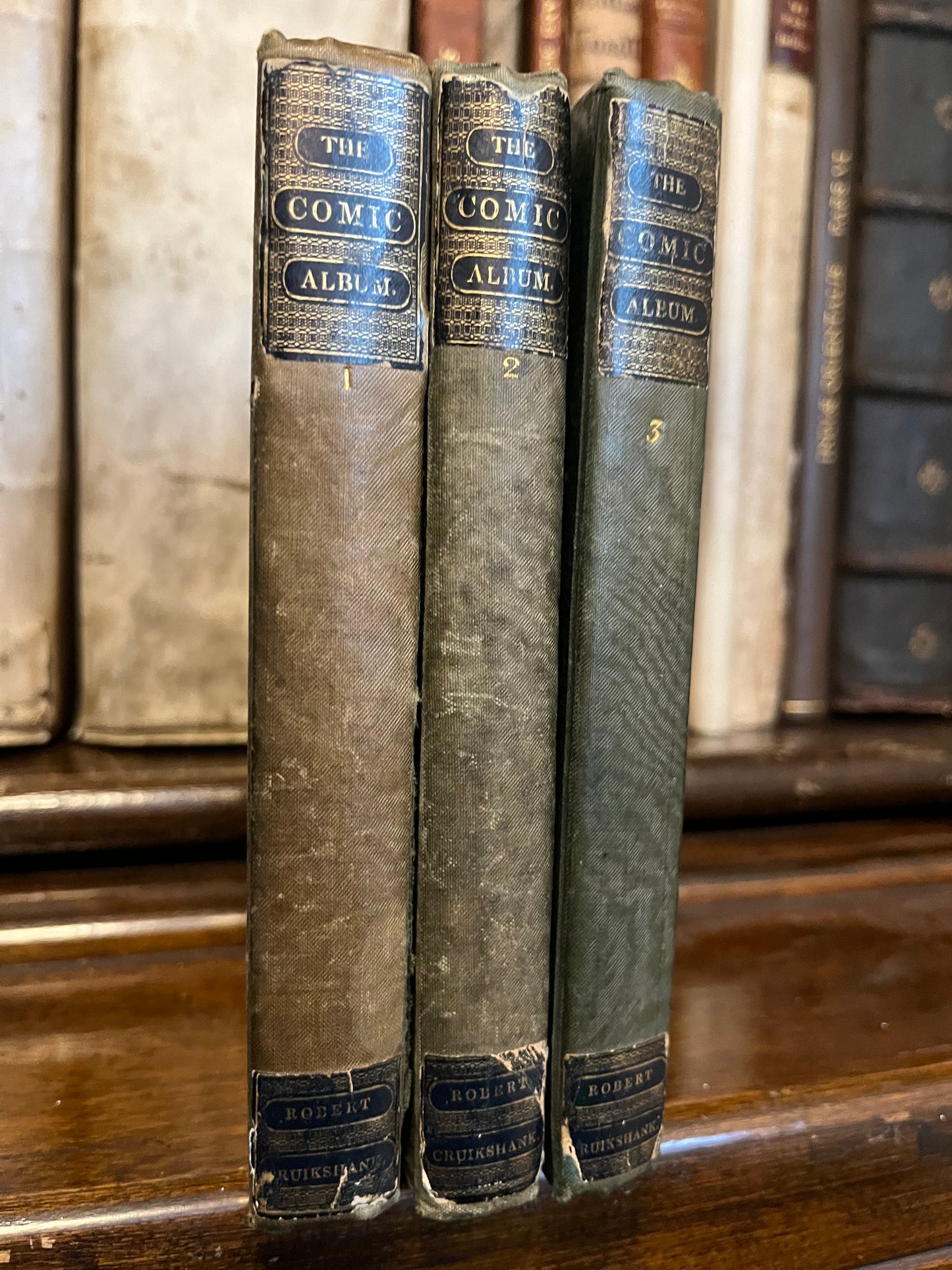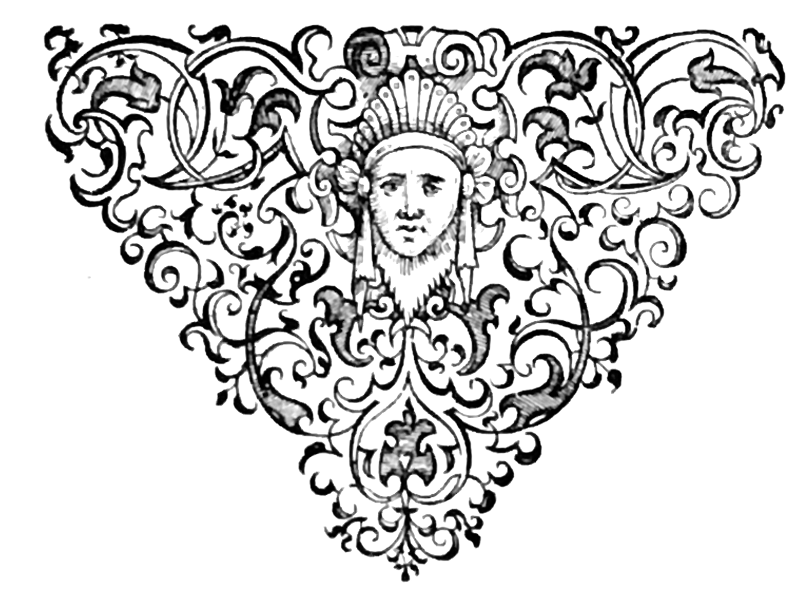De Bry Rare Books
Slavery and Child labour: Important Contemporary Coloured Illustrations by Cruikshank on the Emancipation of British West Indian Slaves and the Regulation of Child Labour in the 1830s.
Slavery and Child labour: Important Contemporary Coloured Illustrations by Cruikshank on the Emancipation of British West Indian Slaves and the Regulation of Child Labour in the 1830s.
Couldn't load pickup availability
The Emancipation of West Indian Slaves and Regulation of British Child labour in the 1830s - with coloured illustrations by Cruikshank
-Cruikshank's Comic Album: A Collection of Humorous Tales in 3 volumes
-Includes "The Condition of the West India Slave contrasted with that of The Infant Slave in our English Factories" complete with 12 plates (colour)
-London: William Kidd c1833
-3 volumes (complete)
-71 plates and 51 full page illustrations all in contemporary hand colour by Robert Cruikshank across 3 volumes
-12mo
-Original green cloth with contemporary title stickers and spines. Wear to covers and some loosing to plates, but otherwise very good.
This is a fascinating contemporary publication showing thoughts and fears in the British establishment during the lead up to the emancipation of British owned slaves in the West Indies. After years of campaigning by the abolitionists, slavery was abolished in the British West Indies in 1834, giving freedom to 750,000 slaves. Cruikshank's images show the concern of the time that the newly freed slaves would rise up against their former owners. Fears had increased due to the recent events in Haiti and the injustices that slaves had suffered for so long under the British. The account is accompanied by hand coloured illustrations by Robert Cruikshank which demonstrate the racist stereotypes of slaves which were prevalent at the time. This is uncomfortable reading, but an important record of the horrific conditions for slaves and racism from the British Establishment.
Juxtaposed to these accounts of slavery, are representations of the harsh conditions of child labourers in Britain. After years of campaigning, the 1833 Factory Act regulated working conditions for children. Following the regulations, children could not work under the age of 9 years. The legislation also meant that 9-13 year olds could now only work 8 hours per day (for up to 48hrs per week), and were entitled to 2 hours of mandatory schooling per day. For 13-18 year olds, hours were limited to 12 hours of work per day. It is still shocking to know that these were the "improved hours" and frightening to imagine working conditions before these regulations came to force. The illustrations in this account highlight these harsh condition and the plight of poor child workers.
The volumes also contain other accounts including "The Devil's Festival" and "The Unknown Tongues"
A fascinating social commentary of slavery and child labour which is uncommon in contemporary colour.
